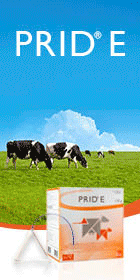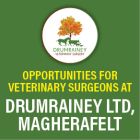BoHV-1 prevalence in Irish dairy herds
BVD and IBR programme managers with Animal Health Ireland, Dr Jonas Brock PhD MSc BSc and Dr Maria Guelbenzu DVM PhD MRCVS, provide an overview of bulk tank milk testing results for BoHV-1 antibodies and vaccination data for a cohort of Irish dairy farms
Bovine Herpesvirus Type-1 (BoHV-1) is a highly infectious pathogen responsible for respiratory disease, termed infectious bovine rhinotracheitis (IBR), and also manifesting in reproductive and neurological forms, with significant economic impacts on cattle farming (Bennett et al, 1999; Hanrahan et al, 2016; Muylkens et al, 2007). The virus spreads primarily through close contact but can also be transmitted via airborne particles (up to five metres), contaminated semen, equipment, and people. Once infected, cattle become lifelong carriers due to latent viral infection in their nervous system. Stressors such as transport, mixing of stock, calving, or nutritional challenges can reactivate the virus, leading to shedding and new infections (Muylkens et al, 2007; Pastoret & Thiry, 1985).
In Ireland, BoHV-1 infection in the dairy sector is widespread, with studies indicating that 75-80 per cent of herds contain carrier animals (Cowley et al, 2011; Sayers et al, 2015). While these studies provide valuable insights, it is worth noting that they are historical, and vaccination uptake against BoHV-1 in Ireland has increased in recent years. Nevertheless, BoHV-1 is considered endemic in the Irish dairy sector, and the majority of herds have been exposed to the virus. Key factors contributing to herd-level prevalence include herd size, cattle purchases, proximity to neighbouring herds, and biosecurity practices (Waldeck et al, 2021).
The economic burden of IBR is considerable, with losses from reduced milk yields, increased culling, reproductive impacts, and higher veterinary costs (Bennett & IJpelaar, 2005; Graham, 2013). Irish farmers spend an estimated €12 million annually on IBR vaccines, reflecting the financial impact of the disease and the importance of effective control measures.
Several countries and regions within the EU—including Austria, Germany, Denmark, Finland, Sweden, Czechia, and parts of Italy—are officially BoHV-1-free, following EU-approved eradication programmes. These areas benefit from additional trade guarantees. Other regions, such as Belgium, Luxembourg, France, parts of Slovakia, and some Italian provinces, are actively working towards eradication under EU-approved plans. BoHV-1-free status or having an approved programme affects trade, particularly for live cattle. Countries without such measures, like Ireland at present, face trade restrictions.
A national programme to control BoHV-1 does not currently exist in Ireland, but is under active discussion, co-ordinated by Animal Health Ireland (AHI; www.animalhealthireland.ie).
The objective of this study is to assess the prevalence of bovine herpesvirus type-1 (BoHV-1) in vaccinated and unvaccinated dairy herds (2017–2024).

Table 1: Summary of data across three private laboratories. Numbers and proportions of vaccinated and unvaccinated herds relate to most recent data.
Materials and methods
Data for this study were provided by three private laboratories located in Ireland. These laboratories provided bulk tank milk (BTM) BoHV-1 antibody (AB) testing results for a total of 7,839 herds over the period from 2017 to 2024 (see Table 1). The herds included in this study represent approximately 50 per cent of all licensed dairy herds in Ireland.
Each laboratory utilised standardised testing kits for BoHV-1 AB detection, following the manufacturer’s instructions. For vaccinated herds, the IDEXX IBR gE Test (marker) was employed and unvaccinated herds were tested using the IDEXX IBR Pool Test. Lab values were interpreted according to the manufacturer’s thresholds (see Table 1). Animals vaccinated with gE-deleted marker vaccines can be discriminated from field-virus infected animals by a negative serological reaction for gE. Animals exposed to the virus (or vaccinated with conventional vaccines) will give a positive reaction to the gE test. Marker vaccinated and infected animals will be positive to the gB or whole virus test.
The gE-blocking ELISA in bulk milk gives a positive reaction only when more than 10–15 per cent of the lactating animals contributing to the tank are infected. Therefore, this test is not typically used to declare a herd to be free from BoHV-1 infection. However, for general surveillance purposes, bulk milk tank tests can give an estimate of BoHV-1 prevalence in a herd, an area or country.
The frequency of testing varied slightly between laboratories. Most herds in the combined dataset were tested three times per year. Herds were classified into two categories based on their reported vaccination status during the observation period. Herds were considered vaccinated if they were consistently vaccinated throughout the study period or transitioned from an unvaccinated to a vaccinated status. Herds were classified as unvaccinated if they did not receive vaccination at any point during the study.
Prevalence rates were calculated annually for both vaccinated and unvaccinated herds, with 95 per cent confidence intervals determined using the Wilson interval method. A herd was considered positive in a given year if it had one or more positive results. A subset of 4,361 herds with complete data spanning the years 2018 to 2024 was used for a detailed longitudinal analysis of infection dynamics. Changes in infection status over time, including transitions from negative to positive and vice versa, were tracked to identify patterns of fluctuating test outcomes.

Figure 1: Trends in BoHV-1 prevalence among all dairy herds (n = 7,839) included in the study from 2017 to 2024.
Results
The data indicates a consistently high prevalence of BoHV-1 within the Irish dairy sector. Across all herds (vaccinated and unvaccinated), 83 per cent recorded at least one positive test result in 2024, demonstrating that a majority of dairy herds have been exposed to BoHV-1 at some point (see Figure 1). This high prevalence has been consistent over the observation period, with annual prevalence rates ranging between 82 per cent and 90 per cent (excluding 2017).
Of the 7,839 herds included, 66.6 per cent were vaccinated or initiated vaccination during the observation period (see Table 1). A trend toward increasing vaccination coverage was observed, with the proportion of vaccinated herds rising slightly from 69 per cent in 2018 to 73 per cent in 2024 (see Figure 2).
Annual prevalence rates were calculated separately for vaccinated and unvaccinated herds (see Table 2). Notably, there is an increasing trend in prevalence among unvaccinated herds. In this group of herds, prevalence rates steadily rose from 68.6 per cent in 2018 to 78.8 per cent in 2024, marking a 10.2 per cent increase over the observation period. In vaccinated herds, the prevalence of BoHV-1 remained consistently high throughout the observation period.
A subset of 4,361 herds had complete data, meaning these herds were tested every year between 2018 and 2024 with at least one result per year. This subset allowed for a more detailed longitudinal analysis of infection dynamics. For these herds, we specifically analysed how the proportion of non-vaccinated negative herds—those unvaccinated and with no BoHV-1 positive test results—changed over time. The results demonstrate a significant decline in the proportion of these herds over the study period (see Figure 3). In 2018, 10 per cent of non-vaccinated herds tested negative, but this proportion steadily decreased to just 4 per cent in 2024 (see Figure 3).

Table 2: Annual prevalence rates for non-vaccinated and vaccinated herds.
Discussion
This study provides an overview of BoHV-1 prevalence in Irish dairy herds over an eight-year period (2017–2024), using data from private laboratories covering approximately 7,800 herds – about half of all licensed dairy herds in Ireland. The findings show consistently high BoHV-1 prevalence, with herd-level rates ranging from 82 per cent to 90 per cent, and reaching 83 per cent in 2024. These results confirm that BoHV-1 remains endemic in the Irish dairy sector, consistent with earlier studies (Cowley et al, 2011; Sayers, 2016).
The study revealed a steady, small increase in vaccination coverage among Irish dairy herds over the observation period, with the proportion of vaccinated herds rising from 69 per cent in 2018 to 73 per cent in 2024 (Figure 2). This reflects an encouraging trend toward greater adoption of vaccination as a strategy for controlling BoHV-1. This upward trend aligns with data on vaccine sales, which indicates a continued high level of expenditure on BoHV-1 (IBR) vaccination in Ireland. Vaccination is a valuable tool for reducing herd-level prevalence by preventing the circulation of the virus within herds and suppressing viral reactivation in infected animals. However, it is important to note that after a major outbreak, many animals in the herd will remain antibody-positive due to past exposure (Brock et al, 2020). These animals serve as reservoirs of the virus through latent infections, and clearing the herd of BoHV-1 requires replacing older, positive animals with younger, negative ones over time. While this process can be prolonged and challenging, vaccination remains critical in halting virus spread within the herd, minimising clinical signs, and reducing the risk of reactivation.

Figure 2: Trends in vaccination coverage.
While vaccination plays a key role in controlling BoHV-1, it is unlikely to eliminate the disease from farms as a single control measure. A meaningful reduction in the prevalence of positive herds will require a coordinated effort that extends beyond vaccination. Complementary measures, such as improving biosecurity protocols, controlling animal movements, and reducing herd-to-herd contact, are critical. An Irish modelling study emphasised the importance of adopting a more structured and comprehensive strategy, including stricter cattle trading regulations, enhanced testing, and biosecurity actions (Brock et al, 2021).
The need for robust biosecurity is further underscored by our observation of a steady decline in the proportion of non-vaccinated negative herds over the observation period (see Table 2 and Figure 3). This trend highlights the increasing difficulty of maintaining BoHV-1-free status in non-vaccinated herds within an environment of high endemicity. The decline in non-vaccinated negative herds suggests that, in the absence of stringent biosecurity measures, herds are becoming increasingly vulnerable to virus exposure.

Figure 3: Proportion of non-vaccinated negative herds out of 4,362 herds with continuously available test results.
Conclusion
This study provides a comprehensive analysis of BoHV-1 prevalence and infection dynamics in Irish dairy herds. We identified persistently high prevalence rates across vaccinated and unvaccinated herds, with 83 per cent of all herds testing positive for BoHV-1 antibodies in 2024. Despite increasing vaccination coverage over the study period, the overall prevalence remained high, reflecting the need for more tailored control measures. Longitudinal analysis highlighted a decline in non-vaccinated negative herds, indicating the increasing difficulty of maintaining virus-free status without robust biosecurity measures.
References
Bennett, R., Christiansen, K., & Clifton-Hadley, R. (1999). Preliminary estimates of the direct costs associated with endemic diseases of livestock in Great Britain. Preventive Veterinary Medicine, 39(3), 155–171.
Bennett, R., & IJpelaar, J. (2005). Updated Estimates of the Costs Associated with Thirty Four Endemic Livestock Diseases in Great Britain: A Note. Journal of Agricultural Economics, 56(1), 135–144.
https://doi.org/10.1111/j.1477-9552.2005.tb00126.x
Brock, J., Lange, M., Guelbenzu-Gonzalo, M., Meunier, N., Vaz, A., Tratalos, J., Dittrich, P., Gunn, M., More, S. J., Graham, D., & Thulke, H.-H. (2020). Epidemiology of age-dependent prevalence of Bovine Herpes Virus Type 1 (BoHV-1) in dairy herds with and without vaccination. Veterinary Research, 51(1), 1–13.
https://doi.org/10.1186/s13567-020-00842-5
Brock, J., Lange, M., Tratalos, J., More, S., Guelbenzu-Gonzalo, M., Graham, D., & Thulke, H. H. (2021). A large-scale epidemiological model of BoHV-1 spread in the Irish cattle population to support decision-making in conformity with the European Animal Health Law. Preventive Veterinary Medicine, 192(April), 105375. https://doi.org/10.1016/j.prevetmed.2021.105375
Cowley, D., Clegg, T., Doherty, M., & More, S. (2011). Aspects of bovine herpesvirus-1 infection in dairy and beef herds in the Republic of Ireland. Acta Veterinaria Scandinavica, 53, 40. https://doi.org/10.1186/1751-0147-53-40
Graham, D. (2013). Bovine herpes virus-1 (BoHV-1) in cattle-a review with emphasis on reproductive impacts and the emergence of infection in Ireland and the United Kingdom. Irish Veterinary Journal, 66(1), 1. https://doi.org/10.1186/2046-0481-66-15
Hanrahan, K., Shalloo, L., Crosson, P., Donnellan, T., Parr, M., Kenny, D. A., Barrett, D., & Lynch, R. (2016). Analysis of the economics of BoHV-1 infection in Ireland , incorporating analysis of the impact of the disease on animal productivity , national genetic gain and international trade.
Muylkens, B., Thiry, J., Kirten, P., Schynts, F., & Thiry, E. (2007). Bovine herpesvirus 1 infection and infectious bovine rhinotracheitis. Veterinary Research, 38(2), 181–209.
https://doi.org/10.1051/vetres:2006059
Pastoret, P. P., & Thiry, E. (1985). Diagnosis and prophylaxis of infectious bovine rhinotracheitis: The role of virus latency. Comparative Immunology, Microbiology and Infectious Diseases, 8(1), 35–42. https://doi.org/10.1016/0147-9571(85)90052-9
Sayers, R. (2016). Associations between exposure to bovine herpesvirus 1 (BoHV-1) and milk production, reproductive performance, and mortality in Irish dairy herds. Journal of Dairy Science, 100(2), 1340–1352. https://doi.org/10.3168/jds.2016-11113
Sayers, R., Byrne, N., O’Doherty, E., & Arkins, S. (2015). Prevalence of exposure to bovine viral diarrhoea virus (BVDV) and bovine herpesvirus-1 (BoHV-1) in Irish dairy herds. Research in Veterinary Science, 100, 21–30. https://doi.org/10.1016/j.rvsc.2015.02.011
Waldeck, H. W. F., van Duijn, L., van den Heuvel-van den Broek, K., Mars, M. H., Santman-Berends, I. M. G. A., Biesheuvel, M. M., & van Schaik, G. (2021). Risk Factors for Introduction of Bovine Herpesvirus 1 (BoHV-1) Into Cattle Herds: A Systematic European Literature Review. Frontiers in Veterinary Science, 8(October), 1–10.
https://doi.org/10.3389/fvets.2021.688935
1. Which statement is incorrect?
- Over the last few years, IBR vaccination in dairy herds has increased
- Over the last few years, the proportion of unvaccinated, IBR BTM negative has decreased
- Over the last few years, prevalence to IBR has increased in both vaccinating and non-vaccinating herds
- None of the above
2 A positive marker gE bulk tank milk test result means:
- The herd has a high prevalence of marker vaccinated animals
- The milking herd is not vaccinated
- The milking herd is vaccinated with marker gE vaccine
- At least 10-15 per cent of animals in the milking herd have been exposed to BoHV-1
3. A positive gB/whole virus bulk tank milk test result:
- Shows that the herd is not vaccinating
- Could be due to exposure to the virus or vaccination
- Indicates at least five per cent of animals in the milking herds have been exposed to BoHV-1
- Should be repeated before taking action
4. What would you advise a herd that has a positive gE bulk tank milk result?
- Concentrate on biosecurity
- The herd can stop vaccinating
- Start full and regular vaccination combined with biosecurity and regular monitoring
- Start vaccination of the milking herd
ANSWERS: 1D; 2D; 3B; 4C.









